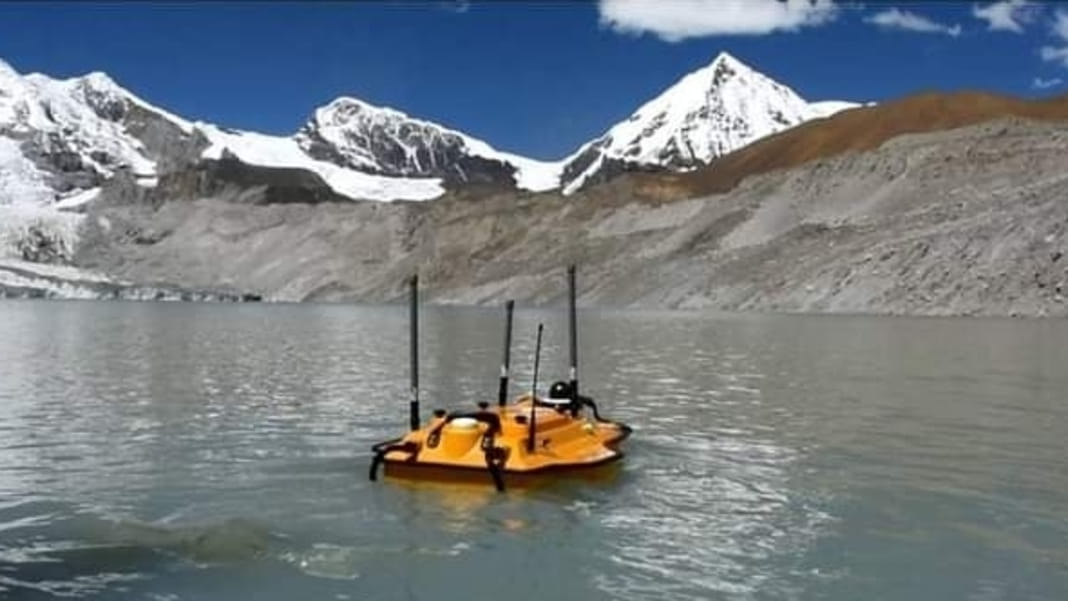Sikkim, June 25: The Department of Science and Technology (DST), Govt. of Sikkim is undertaking a scientific expedition to East Rathong glacier in West Sikkim.
The two weeks long expedition, which began on June 22, aims to advance the understanding of glacier dynamics and the impacts of climate change on the Himalayan region.

Minimizing the threat of glacial lake outburst flood (GLOF) in Sikkim is one of the core objectives of Sikkim State Climate Change Cell established under National Mission for sustaining the Himalayan Ecosystem (NMSHE).
The expedition is led by a distinguished team of scientists and researchers from DST, the Govt of Sikkim equipped with state-of-the-art instruments and technologies to ensure precise and accurate data collection.

East Rathong glacier is a valley type glacier with an average width of around 800m located in Gyalshing district of Sikkim under Khangchendzonga National Park at an elevation of 4600 – 6700 m above sea level. Facing Southeast, it is one of the sources of Rangit River. The expedition to the glacier includes a three days trek from Yuksom, the last motorable village in West Sikkim. The main glacier occupies an area of 4.8 sq km and has a length of 7km. The total catchment area of East Rathong glacier up to the gauging site is 19.8 sqkm.
Science and Technology Department, Govt. of Sikkim has been conducting the long-term monitoring of East Rathong glacier since 2012.

Scientists and researchers from the department have been conducting extensive field research twice every year since then.
In this context, nineteen potentially vulnerable glacial lakes have been identified in the state of Sikkim. This expedition also encompasses the scientific study of three such lakes.
The major objectives of the present field expedition include bathymetric survey of three potentially vulnerable glacial lakes in the region (Rathong lake, Bhaley Pokhari and Tikip la lake), stake installation for study of glacier velocity, study of vertical retreat of East Rathong glacier, glacio-hydrology of East Rathong melt water stream, and maintenance and upgradation of automatic weather station installed at Rathong glacier.
Advertisement
The recent flood of October 4, 2023, highlighted the urgent need for comprehensive glacier and glacial lake studies. This catastrophic event caused significant damage to infrastructure, disrupted communities, and underscored the vulnerabilities associated with climate change in the Himalayan region. The findings will not only enrich scientific knowledge but also guide policies and strategies for climate adaptation and disaster risk reduction in the region.
“The threats associated with climate change are evident and more and more threats are likely to emerge in the future” said Dr. Sandeep Tambe, Secretary, DST, Govt. of Sikkim.
“Such proactive scientific expeditions are required to ensure the Government of Sikkim’s vision of Sunaulo Sikkim, Samriddha Sikkim” he said.
WATCH:
Find latest news from every corner of Northeast India at hubnetwork.in, your online source for breaking news, video coverage.
Also, Follow us on-
Twitter-twitter.com/nemediahub
Youtube channel- www.youtube.com/@NortheastMediaHub2020
Instagram- www.instagram.com/ne_media_hub





